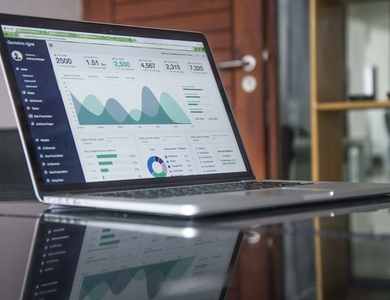
The State Of Data-Driven Marketing In 2023
In this article, we will take a look at the state of data-driven marketing in 2023 and how it is transforming the marketing landscape.
Read MoreAt [B]RIGHT, we illuminate data-informed digital solutions to help your brand succeed in an increasingly complex marketing landscape. We take the guesswork out of your marketing strategy.
According to a survey conducted by Meltwater, a social and media intelligence firm, almost 61% of businesses now have a social listening system in place and are monitoring for keyword mentions, and 82% of those businesses see the high value of social listening as a key planning resource. Among the various topics that can be monitored through social listening, brand sentiment and reputation management are the top priorities, especially since social platforms are so often where brands can be called out by disgruntled consumers expecting immediate responses.
Why are more brands not using social listening? According to the survey, brands find it difficult to be effective with social listening, citing an excess of time and employee bandwidth that they feel cannot be dedicated to the task. So in spite of their high value, many brands find social listening practices to be cost- and time-prohibitive in most cases. Among the channels that are monitored by businesses, Twitter gets the top ranking, followed by Facebook and then Instagram. Twitter is at the top likely because of the real-time and fully public nature of the platform as well as the use of hashtags, which makes the conversations more easily “mined.”
Facebook and Instagram have native listening tools but are not easily accessible, which is unfortunate because the platforms have much higher reach and brand adaptation than Twitter in most industries. Runner-up platforms TikTok and Snapchat are developing a range of listening tools, which will likely make them more valuable platforms to brands, since TikTok boasts over a billion users and 90% of the US Gen Z population can be reached using Snapchat. Social listening is a treasure trove of insights for brands and marketers, and usage is only expected to grow in the coming decade.
Social media continues to evolve alongside changes in trends, shifts in user participation and engagement, and updates to the platforms themselves. People are looking to establish more human connections online, and brands would be wise to take this into account. How can brands coexist on these platforms without becoming an unwelcome disruption? How can they position their content to sit natively alongside desired content in a way that is authentic for the brand?
Meta recently published six “culture codes” that give brands pointers for adjusting to these changes: “Culture is driven by people, and that culture has its own language—relatable, unpolished and above all, human. Creativity here feels like it’s made by people, for people. When brands understand prevailing culture codes, they communicate as peers, establishing relatability and trust through a shared language.”
Here are Meta’s six culture codes:
Retail Dive surveyed 211 retail leaders in Q4 of 2021 on the obstacles they faced with business operations, and among the top seven findings, several point to consumer behavioral shifts and the increased need of cohesive brand expression to address these obstacles. Reaching consumers and driving them toward conversion is an obstacle faced by many brands; the survey found that 57% of executives have increased their social media posting frequency in the past year, and 39% reported they have employed promotions to enhance the customer experience.
As the pandemic has catapulted the need for online shopping, hybrid ordering/pickup arrangements, and other convenience-oriented shopping experiences, it comes as no surprise that 53% of retail executives plan to invest in website updates, implementing online ordering solutions and supporting changes to their business in the next year. Also in 2022 the two most mentioned plans among retail executives were partnerships with brands and special in-store promotions to drive foot traffic for select customers.
Data-driven decision-making is core to the sustainability of business operations in the modern marketplace, which faces competition from every angle on every niche platform and sales channel. Testing and gathering data on any given topic has never been easier with the variety of tools available to business decision makers, but the effectiveness of any test comes down to proper strategy and implementation. In this article published by MarketDial, they summarize the process in a few easy-to-follow steps.
Testing business changes and improvements has never been easier, but it all comes down to proper and disciplined test planning, execution, and analysis. It is a process that helps to validate improvements rather than implementing them first and realizing too late that there is a design flaw or the improvement does not resonate with customers—a mistake that may cost much more than you might spend on testing and verifiable success probabilities. Depending on the complexity of the information needed, you may want to consult with a data research agency (with experience in analyzing large data sets) that can guide the process, perform regression analysis of the data, and create an objective implementation plan without company-created biases.
The consumer goods industry has undergone a prolonged period of digital transformation, and over the last 20 years, the growth of e-commerce has steadily outpaced brick-and-mortar retailing. Noogata, a modular AI data science platform, has compiled a short list of key industry changes affecting businesses, and they demonstrate how these have increased the need for deeper data-driven solutions.
In Noogata’s perspective, all of these transformative trends in the consumer goods industry point to the need for AI data science solutions. But from the [B]RIGHT perspective, there is still the need for an overarching strategy and audience understanding that precedes the implementation of such tools. It should all start with a deep analysis of your brand positioning in relation to your audience. That will provide the solid basis upon which to build your overarching business strategy and to inform where to implement efficiency and automated tools.
(Editorial) Methodology: We help brands grow based on data, research, data analysis and synthesis, and a hefty dose of proven processes, tactics, and channel-specific strategies. | Objective: To distribute timely insights and information about tools, trends, and research and data strategies that work. | Sample size: n=the entirety of the Internet. | Audience: Smart brand marketers that understand the importance of using data and research to inform strategic decision-making.

In this article, we will take a look at the state of data-driven marketing in 2023 and how it is transforming the marketing landscape.
Read More
Marketers need to be agile and proactive in their planning, adapting to the changing landscape and staying ahead of the competition.
Read More
The marketing landscape in 2022 saw the continuation of several key trends, including the growing importance of data-driven marketing, the rise of e-commerce and the increasing dominance of digital channels.
Read More